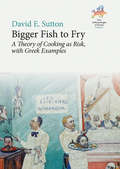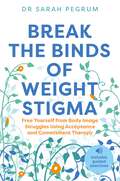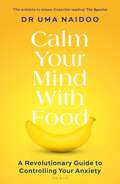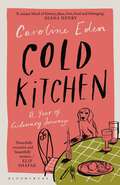- Table View
- List View
Bell pepper (Cross-section) (Large Print)
This is a labelled image of a bell pepper in longitudinal cross section (cut through from top to bottom). There is a locator dot shown, which will be at the top left of the page when the image is the correct way up. The image of the bell pepper is in the middle of the page. At its centre is the fruits core covered by seeds. Around the core is a void, and around this, on the outside of the fruit, are its flesh and skin. At the top of the image is the peppers stem. The pepper is about ten centimetres long and although bright green when immature, can be be red, yellow or even orange when fully ripened.
Bell pepper (Cross-section) (UEB Contracted)
This is a labelled image of a bell pepper in longitudinal cross section (cut through from top to bottom). There is a locator dot shown, which will be at the top left of the page when the image is the correct way up. The image of the bell pepper is in the middle of the page. At its centre is the fruits core covered by seeds. Around the core is a void, and around this, on the outside of the fruit, are its flesh and skin. At the top of the image is the peppers stem. The pepper is about ten centimetres long and although bright green when immature, can be be red, yellow or even orange when fully ripened.
Bell pepper (Cross-section) (UEB Uncontracted)
This is a labelled image of a bell pepper in longitudinal cross section (cut through from top to bottom). There is a locator dot shown, which will be at the top left of the page when the image is the correct way up. The image of the bell pepper is in the middle of the page. At its centre is the fruits core covered by seeds. Around the core is a void, and around this, on the outside of the fruit, are its flesh and skin. At the top of the image is the peppers stem. The pepper is about ten centimetres long and although bright green when immature, can be be red, yellow or even orange when fully ripened.
Bigger Fish to Fry: A Theory of Cooking as Risk, with Greek Examples (New Anthropologies of Europe: Perspectives and Provocations #3)
by David E. SuttonWhat defines cooking as cooking, and why does cooking matter to the understanding of society, cultural change and everyday life? This book explores these questions by proposing a new theory of the meaning of cooking as a willingness to put oneself and one’s meals at risk on a daily basis. Richly illustrated with examples from the author’s anthropology fieldwork in Greece, Bigger Fish to Fry proposes a new approach to the meaning of cooking and how the study of cooking can reshape our understanding of social processes more generally.
Break the Binds of Weight Stigma: Free Yourself from Body Image Struggles Using Acceptance and Commitment Therapy
by Dr Sarah Pegrum"I can't do that until I've lost a bit of weight". "I need to slim down first". "When I'm thinner I'll..."What if you didn't feel held back by your body? This guide helps you to free yourself from harmful social attitudes about weight and to start living now.Break the Binds of Weight Stigma draws on Acceptance and Commitment Therapy (ACT), a positive, action-based form of therapy that works by accepting your natural emotions and using your own personal values to build a path to the life you want to live. Stories, worksheets, reflection questions, and guided exercises show you how to embrace yourself and fight back against the social structures that tie value to size. This is not a book about changing your body or losing weight. It's a guide to help you connect with the things that are important to you regardless of your weight. It's a step towards countering the harmful messages in society about our bodies. It's a movement. It's radical. It's freedom.
Burger (Large Print)
This is a picture of a burger seen from the side in the middle of the page. There is a locator dot shown, which will be at the top left of the page when the image is the correct way up. At the top of the picture is half of the burger bun. Going down the page from this is a slice of tomato, burger meat, a lettuce leaf, more burger meat, and lastly the other half of the bun. On the left hand side of the burger, near the bottom is a dollop of tomato ketchup dripping down.
Burger (UEB Contracted)
This is a picture of a burger seen from the side in the middle of the page. There is a locator dot shown, which will be at the top left of the page when the image is the correct way up. At the top of the picture is half of the burger bun. Going down the page from this is a slice of tomato, burger meat, a lettuce leaf, more burger meat, and lastly the other half of the bun. On the left hand side of the burger, near the bottom is a dollop of tomato ketchup dripping down.
Burger (UEB Uncontracted)
This is a picture of a burger seen from the side in the middle of the page. There is a locator dot shown, which will be at the top left of the page when the image is the correct way up. At the top of the picture is half of the burger bun. Going down the page from this is a slice of tomato, burger meat, a lettuce leaf, more burger meat, and lastly the other half of the bun. On the left hand side of the burger, near the bottom is a dollop of tomato ketchup dripping down.
Cacao fruit (Cross-section) (Large Print)
This is a labelled image of a cacao fruit in longitudinal cross section (cut through from top to bottom). This fruit is the source of cocoa beans, from which chocolate products are made. There is a locator dot shown, which will be at the top left of the page when the image is the correct way up. The image of the cacao fruit is in the middle of the page. At its centre is a cavity filled with white pulp and cocoa beans (seeds), which are also white and light brown, and only change to their familiar very dark brown colour after processing. The hard, leathery rind or skin is ridged and is up to three centimetres thick. The fruit is between fifteen and thirty centimetres long.
Cacao fruit (Cross-section) (UEB Contracted)
This is a labelled image of a cacao fruit in longitudinal cross section (cut through from top to bottom). This fruit is the source of cocoa beans, from which chocolate products are made. There is a locator dot shown, which will be at the top left of the page when the image is the correct way up. The image of the cacao fruit is in the middle of the page. At its centre is a cavity filled with white pulp and cocoa beans (seeds), which are also white and light brown, and only change to their familiar very dark brown colour after processing. The hard, leathery rind or skin is ridged and is up to three centimetres thick. The fruit is between fifteen and thirty centimetres long.
Cacao fruit (Cross-section) (UEB Uncontracted)
This is a labelled image of a cacao fruit in longitudinal cross section (cut through from top to bottom). This fruit is the source of cocoa beans, from which chocolate products are made. There is a locator dot shown, which will be at the top left of the page when the image is the correct way up. The image of the cacao fruit is in the middle of the page. At its centre is a cavity filled with white pulp and cocoa beans (seeds), which are also white and light brown, and only change to their familiar very dark brown colour after processing. The hard, leathery rind or skin is ridged and is up to three centimetres thick. The fruit is between fifteen and thirty centimetres long.
Calm Your Mind with Food: A Revolutionary Guide to Controlling Your Anxiety
by Uma NaidooWhen it comes to fighting anxiety, you have more control than you think: the power is at the end of your fork.We're in the middle of a global anxiety epidemic, but in Calm Your Mind With Food, bestselling author and nutritional psychiatrist Dr Uma Naidoo gives you the tools to take back control. Dr Naidoo draws on the latest science to demonstrate how an understanding of how both the brain and gut microbiome works, and a diet that creates a strong foundation for mental health, will equip you to control your anxiety.In this revolutionary, solutions-focussed and full-body approach to relieving anxiety, you'll learn:· Dr Uma's six pillars to calm the mind· How inflammation affects everything from anxiety and depression to Alzheimer's disease· How the trillions of bacteria living in your gut are key to controlling anxiety· How to incorporate anxiety-busting foods into your diet, from the obscure (ashwagandha) to the ubiquitous (vitamin C) · Which foods you should avoid as you make anti-anxiety eating choices· The best diets for managing symptoms of anxiety and depressionWith guidelines for creating your own personal anti-anxiety meal plan and dozens of supernutrient-forward, delicious recipes, Dr Naidoo shows how to effectively use food and nutrition as essential tools for calming the mind. This ground-breaking guide will help you boost your immunity, reduce anxiety and enhance your overall mental well-being.
Cantaloupe Melon (Cross-section) (Large Print)
This is a labelled image of a cantaloupe melon shown in longitudinal cross section (cut through from top to bottom). There is a locator dot shown, which will be at the top left of the page when the image is the correct way up. The image of the cantaloupe melon fills the page. At its centre is a cavity filled with seeds. Surrounding this is the sweet and juicy flesh and thick rind-like skin of the fruit. The cantaloupe is about fifteen to twenty centimetres in length. Its skin is a dull beige grey colour but the flesh inside is a delicate pink orange.
Cantaloupe Melon (Cross-section) (UEB Contracted)
This is a labelled image of a cantaloupe melon shown in longitudinal cross section (cut through from top to bottom). There is a locator dot shown, which will be at the top left of the page when the image is the correct way up. The image of the cantaloupe melon fills the page. At its centre is a cavity filled with seeds. Surrounding this is the sweet and juicy flesh and thick rind-like skin of the fruit. The cantaloupe is about fifteen to twenty centimetres in length. Its skin is a dull beige grey colour but the flesh inside is a delicate pink orange.
Cantaloupe Melon (Cross-section) (UEB Uncontracted)
This is a labelled image of a cantaloupe melon shown in longitudinal cross section (cut through from top to bottom). There is a locator dot shown, which will be at the top left of the page when the image is the correct way up. The image of the cantaloupe melon fills the page. At its centre is a cavity filled with seeds. Surrounding this is the sweet and juicy flesh and thick rind-like skin of the fruit. The cantaloupe is about fifteen to twenty centimetres in length. Its skin is a dull beige grey colour but the flesh inside is a delicate pink orange.
Carrot (Large Print)
This image of a carrot fills the centre of the page. There is a locator dot shown, which will be at the top left of the page when the image is the correct way up. The carrot has a swollen taproot (main root), which is the part of the plant usually eaten, although the green leaves are edible and tasty. The root is sweet and crunchy. The carrots shoots and feathery leaves fill the top part of the page. They join the taproot in the centre of the page. The taproot of the carrot is usually coloured orange but some varieties are white or purple. It is fat at the top and tapers to a point at the bottom of the page. There are fine root hairs attached to the taproot through which the plant draws nutrition from the soil.
Carrot (UEB Contracted)
This image of a carrot fills the centre of the page. There is a locator dot shown, which will be at the top left of the page when the image is the correct way up. The carrot has a swollen taproot (main root), which is the part of the plant usually eaten, although the green leaves are edible and tasty. The root is sweet and crunchy. The carrots shoots and feathery leaves fill the top part of the page. They join the taproot in the centre of the page. The taproot of the carrot is usually coloured orange but some varieties are white or purple. It is fat at the top and tapers to a point at the bottom of the page. There are fine root hairs attached to the taproot through which the plant draws nutrition from the soil.
Carrot (UEB Uncontracted)
This image of a carrot fills the centre of the page. There is a locator dot shown, which will be at the top left of the page when the image is the correct way up. The carrot has a swollen taproot (main root), which is the part of the plant usually eaten, although the green leaves are edible and tasty. The root is sweet and crunchy. The carrots shoots and feathery leaves fill the top part of the page. They join the taproot in the centre of the page. The taproot of the carrot is usually coloured orange but some varieties are white or purple. It is fat at the top and tapers to a point at the bottom of the page. There are fine root hairs attached to the taproot through which the plant draws nutrition from the soil.
Cauliflower (Large Print)
This image of a cauliflower fills the centre of the page. There is a locator dot shown, which will be at the top left of the page when the image is the correct way up. This vegetable is in fact a highly modified flower. It is a member of the Brassicaceae family, which includes cabbage, sprouts, broccoli and kale. The head (or curd) of the cauliflower is at the top of the image; it has a lumpy texture and is a creamy white in colour. Down the page are the thick green leaves with their thick, lighter-coloured veins spreading out from the cauliflower's stalk at the bottom of the image.
Cauliflower (UEB Contracted)
This image of a cauliflower fills the centre of the page. There is a locator dot shown, which will be at the top left of the page when the image is the correct way up. This vegetable is in fact a highly modified flower. It is a member of the Brassicaceae family, which includes cabbage, sprouts, broccoli and kale. The head (or curd) of the cauliflower is at the top of the image; it has a lumpy texture and is a creamy white in colour. Down the page are the thick green leaves with their thick, lighter-coloured veins spreading out from the cauliflower's stalk at the bottom of the image.
Cauliflower (UEB Uncontracted)
This image of a cauliflower fills the centre of the page. There is a locator dot shown, which will be at the top left of the page when the image is the correct way up. This vegetable is in fact a highly modified flower. It is a member of the Brassicaceae family, which includes cabbage, sprouts, broccoli and kale. The head (or curd) of the cauliflower is at the top of the image; it has a lumpy texture and is a creamy white in colour. Down the page are the thick green leaves with their thick, lighter-coloured veins spreading out from the cauliflower's stalk at the bottom of the image.
Cherries (Large Print)
This page shows an image of two cherries joined by their stalks, and a leaf. They are slightly larger than life-size. There is a locator dot shown, which will be at the top left of the page when the image is the correct way up.Just to the right of centre you can find the leaf with its pattern of veins. To the left of this, the two stalks curve down to the fat, sweet red cherries nearer the bottom of the page.
Cherries (UEB Contracted)
This page shows an image of two cherries joined by their stalks, and a leaf. They are slightly larger than life-size. There is a locator dot shown, which will be at the top left of the page when the image is the correct way up.Just to the right of centre you can find the leaf with its pattern of veins. To the left of this, the two stalks curve down to the fat, sweet red cherries nearer the bottom of the page.
Cherries (UEB Uncontracted)
This page shows an image of two cherries joined by their stalks, and a leaf. They are slightly larger than life-size. There is a locator dot shown, which will be at the top left of the page when the image is the correct way up.Just to the right of centre you can find the leaf with its pattern of veins. To the left of this, the two stalks curve down to the fat, sweet red cherries nearer the bottom of the page.
Cold Kitchen: A Year of Culinary Journeys
by Caroline Eden'With its union of practicality and magic, a kitchen is a portal offering extended range and providing unlikely paths out of the ordinary. Offering opportunities to cook, imagine and create ways back into other times, other lives and other territories. Central Asia, Turkey, Ukraine, the South Caucasus, Russia, the Baltics and Poland. Places that have eased into my marrow over the years shaping my life, writing and thinking. They are here, these lands I return to, in this kitchen.'A welcoming refuge with its tempting pantry, shelves of books and inquisitive dog, Caroline Eden finds comfort away from the road in her basement Edinburgh kitchen. Join her as she cooks recipes from her travels, reflects on past adventures and contemplates the kitchen's unique ability to tell human stories. This is a hauntingly honest, and at times heartbreaking, memoir with the smell, taste and preparation of food at its heart. From late night baking as a route back to Ukraine to capturing the beauty of Uzbek porcelain, and from the troublesome nature of food and art in Poland to the magic of cloudberries, Cold Kitchen celebrates the importance of curiosity and of feeling at home in the world.




